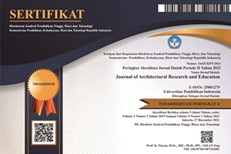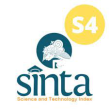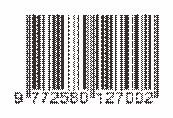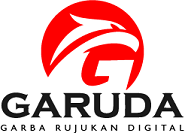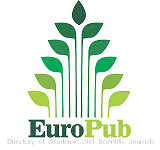QUESTIONING THE OBVIOUS: A RESOURCE FOR THE CREATIVITY DEVELOPMENT OF FIRST YEAR ARCHITECTURAL STUDENTS
Abstract
Keywords
Full Text:
PDFReferences
Analyse et études société. (2008). Les compétences transversales, clés, non techniques: Quels contenus ? Quel rôle pour l’éducation? Sireas asbl (13).
NACCCE: National advisory Comitee on Creative and Cutral Education. (Mai 1999). All our Futures: Creativity, Culture ane Education. the Secretary of State for Education and Employment and to the Secretary of State for Culture, Media and Sport.
Adams, G. M. (1997). The Art of the Question. New York: Wiley & Sons.
Amabile, T. (2012, Avril 26). Compnential theory of Creativity. Havard Business School.
Award, T. B., Smith, S. M., & Finke, R. A. (1999). Creative Cognition. Handbook of Creativity , 189-212. Cambridge University Press.
Couwenbergh, J. P., & Godys, J. (2014). Concevoir l'architecture: entre complexité et simplexité. Paris, France: Collège de France.
Crick, M. (1998). Exploring Excellence: How Architects Think. Trustees of Byera Hadley PostGraduate Travelling Scholarship.
De Bono, E. (1992). Serious Creativity. New York: Harper Business Edition.
Degraff, J., & Lawrence, A. C. (2002). Creativity at work, developping the right practices to make innovation happen. (U. o. School, Éd.) Jossey-Bass.
Filteau, S. (2012, Printemps). La créativité sous toutes ses coutures. Recherche en éducation, volume 25, n°3, Pédagogie collégiale .
Fossel, M., Gingras, Y., & Lardière, J. (s.d.). CONNAISSANCE. Accessed June 12, 2015, at www.universalis.fr/encyclopédie/connaissance: URL: http://universalis.fr/encyclopédie/connaissance.
Fürst, G., & Lubart, T. (2013). Inhibition et créativité. Journée Scientifique de l'Institut Université Paris Descartes de Psychologie .
Author, (2017)
Guichard, J. (2006, Août 20). http://le.partehon.pagesperso-orange.fr/husserldroite.htm. Hélie, S., & Sun, R. (2010). Incubation Insight, and Creative Problem Solving: A Unified Theory and a Connectionnist Model. Psychological Review , 117 (3), pp. 994-1024.
Kheiri, F., Daneshpoor, A., & Khanmohammadi, M. (2013). A comparison of different Paradigms of Architectural Design Process: Unconsciousness, Hyperconscious. International Journal of Applied and Basic Sciences .
Kiefer, C., & Constable, M. (2013). The Art of Insight How More Aha! Moments. Berrett-Koehler Publishers Inc.
Landau, E. (2007). Creativity a handbook for teachers. World Scientific Publishing.
Levitt, T. (2002, Aout). Creativity is not enough. Harvard Business Review .
Loufrani-Fedida, S. (2012, Juin). Les compétences requises du chef de projet. SEES, revue économique et sociale (2).
Peavey, F. (1997). Strategic questionning an approach to creating personal and social change. Vivian Hutchinson.
Richard, M., & Bissonnette, S. (2001). Comment construire des compétences en classe. Des outils pour la réforme. Condensé d'un livre . Montréal: Chenelière/McGraw.
Ritter, S. M., Baaren, R. B., & Dijksterhuis, A. (2011). Creativity: The role of uncounscious process in idea generation and idea selection. Elsevier .
Salama, A. (2013). Seeking Responsive Forms of Pedagogy in Architectural Education.
Salama, A. (2009). Transformative Pedagogy: Knowledge Construction and Effective Curiculum Delivery in Competetive Higher Education.
Salama, A., & Wilkinson, N. (2007). Design Studio Pedagogy: Horizons for the Future. (A. S. Nicholas, Éd.)
Sawyer, R. K. (2006). Explaning Creativity, The science of Human Innovation. New York: Oxford University Press.
Sellier, A. L. (2013). http://www.hec.fr/News-Room/la creativité-la compétence-cle-des annees- a venir-
Sternberg, & Lubart. (1995). An investment approach to creativity: Theory and Data InS M. Smith. Dans T. W. Finke, The creative approach (pp. 269-302). MIT Press.
Sternberg, R. (2007). Creativity as a Habit. Creativity a handbook for teacher . World Scientific publishing.
Tardif, J., & Meirieu, P. (1996, mars- Avril). Stratégie pour favoriser le transfert des connaissances. Vie pédagogique (98), p. 7.
Van Gundy, A. B. (2005). 101 activities for teaching creativity and solving problem. Tlfebook.
Vogt, Brown, J., & Isaacs, D. (2003). L'Art de Poser des Questions Efficaces, Cataliser les idées, l'Innovation et l'Action. Mill Valley, Canada: Whole Systems Associations Pegasus Communications.
Ward, T. B. (2007). The Multiple Roles of Educators in Children’s Creativity. Creativity A Handbook for teachers . (W. Scientific, Éd.) Singapore: AI - Girl TAN National Institute of Education, Nanyang Technological University, Singapore.
DOI: https://doi.org/10.17509/jare.v5i2.60734
Refbacks
- There are currently no refbacks.
Copyright (c) 2024 Journal of Architectural Research and Education

This work is licensed under a Creative Commons Attribution-NonCommercial-ShareAlike 4.0 International License.
Statcounter

This work is licensed under a Creative Commons Attribution-ShareAlike 4.0 International License.


